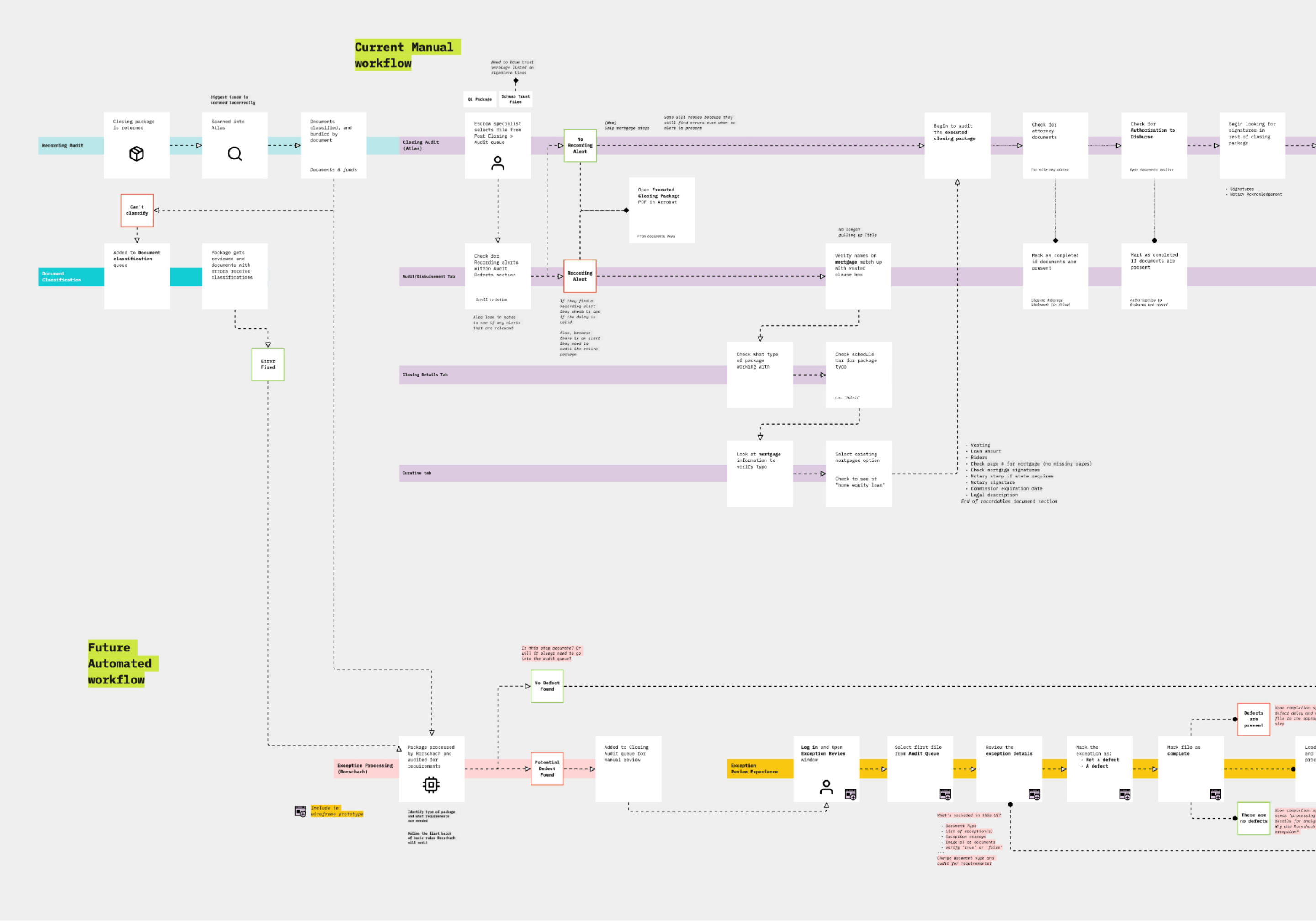Matt J. Smith
Strategy & Research
matthew.smith10[at]gmail[dot]com
matthew.smith10[at]gmail[dot]com

By using machine learning to pre-process closing packages, and automate a key workflow, we reduced employee stress while enabling them to complete 5 times more audits. [External Figma Link]

Transforming an historically manual process into a consumer facing digital experience, and productized design system, required strategic guidance on how human-centered design fits into a feature-focused approach to building digital products. [External Figma Link]

Changing how machine ownsers identify and purchase the right parts. When you're the leader in an industry that offers a range of complex machines, attachments, and technology solutions your success comes directly from helping your customers find the right tools. We developed problem statements, validated hypothesis through user research, and mapped out ecosystems to help Cat deliver a best-in-class experience.
matthew.smith10[at]gmail[dot]com